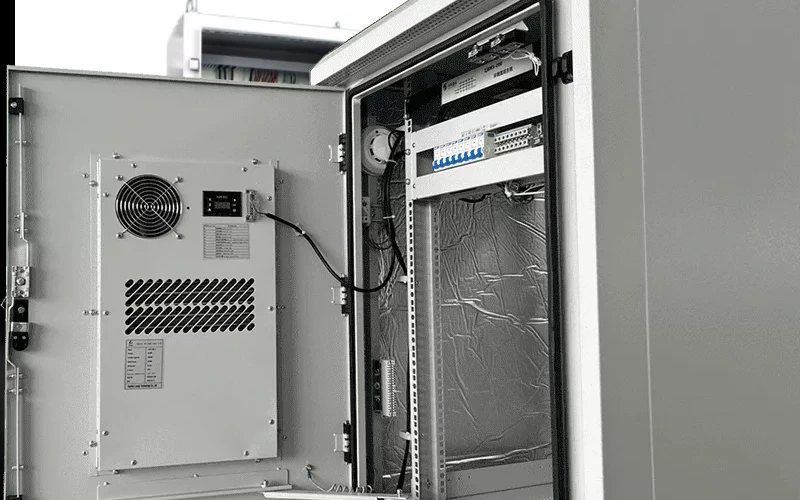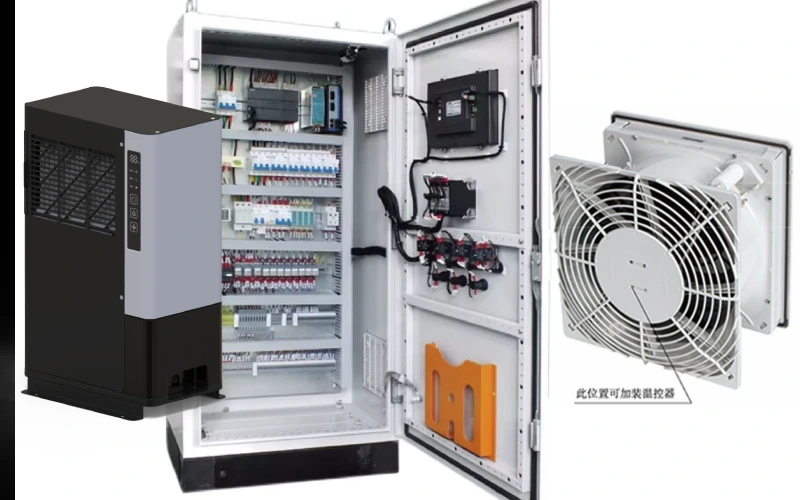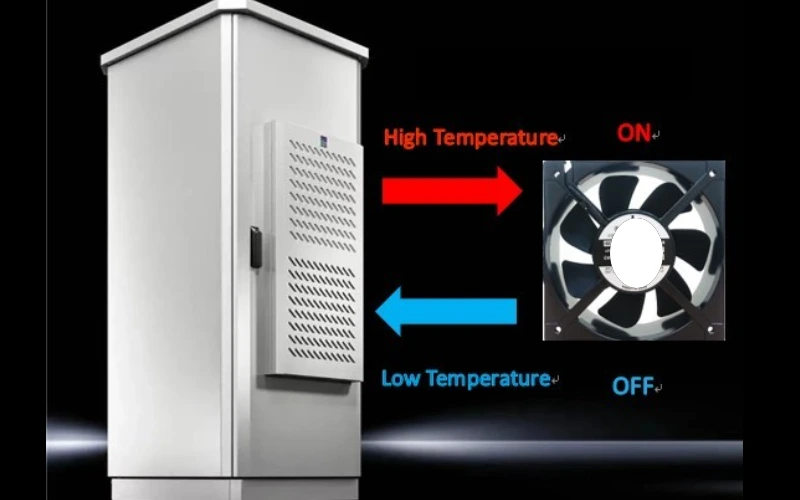You might wonder if an electrical panel and a breaker box are the same thing. They often get mixed up, but they actually serve different roles. An electrical panel is the main hub that manages and distributes electricity throughout your home or building. A breaker box, on the other hand, houses the breakers that protect each circuit. Knowing the difference in the Electrical Panel vs Breaker Box debate helps you make safer choices about upgrades, repairs, and daily use.
Key Takeaways
- An electrical panel is the main power hub that distributes electricity throughout a building, while a breaker box holds the circuit breakers that protect each electrical circuit.
- Circuit breakers in the breaker box prevent overloads and fires by cutting power when problems occur, and they can be easily reset without touching live wires.
- Upgrading your electrical panel or breaker box improves safety but does not guarantee all wiring is safe; always check hidden wiring and call a licensed electrician for repairs or upgrades.
- Warning signs like frequent breaker trips, flickering lights, burning smells, or rust on the panel mean you should seek professional help immediately to avoid hazards.
- Choosing certified and durable solutions, like Linkwell’s electrical power distribution boxes, ensures reliable power management and safety for homes and businesses.
Electrical Panel vs Breaker Box

Electrical Panel Definition
You probably hear the term “electrical panel” a lot, especially when talking about home upgrades or repairs. An electrical panel is the main control center for all the electricity in your building. It takes power from the utility company and sends it out to different circuits in your home or business. Inside, you find important parts like bus bars, grounding apparatus, main disconnect switches, and circuit breakers. The electric panel keeps everything organized and helps you manage where the power goes.
Many people think that swapping out an old electrical panel means every wire in the house is new and safe. That’s not always true. Sometimes, only the panel and visible switches get replaced, while old wires stay hidden in the walls. This can lead to safety risks if those wires are worn out or damaged.
Breaker Box Meaning
Now, let’s talk about the breaker box. You might see this term used when someone needs to reset a tripped breaker after plugging in too many devices. The breaker box is the part of the electrical panel that holds all the circuit breakers. These breakers protect each circuit from overloads and short circuits. If something goes wrong, the breaker trips and cuts off power to prevent damage or fire.
Some people confuse fuses and breakers, thinking they work the same way. Actually, fuses melt and need replacing after they blow, while circuit breakers just need a quick reset. The breaker box makes it easy for you to access and reset these breakers without touching any live wires.
Key Differences
Let’s break down the key differences between an electrical panel and a breaker box. You’ll see why knowing the electrical panel vs breaker box distinction matters for safety and upgrades.
| Aspect | Electrical Panel | Breaker Box |
|---|---|---|
| Definition | Main enclosure with bus bars, grounding, disconnect switches, and circuit breakers. | Compartment inside the panel that holds the circuit breakers. |
| Components | Includes bus bars, grounding, main disconnect, breakers or fuses. | Contains only circuit breakers. |
| Size and Space | Larger, needs more room. | Smaller, more compact. |
| Complexity | More complex, needs professional installation. | Simpler, easier to install. |
| Safety Features | Has main disconnect and monitoring controls. | May not have main disconnect or monitoring. |
| Usage | Distributes power throughout the building, handles bigger needs. | Protects and regulates electrical lines in smaller systems. |
| Cost | Usually costs more upfront. | More budget-friendly. |
Tip: If you plan to upgrade your electrical system, don’t assume that a new electrical panel means every wire is safe. Always check the condition of hidden wiring, especially in older homes.
You might wonder how modern solutions fit into this. Linkwell offers electrical power distribution boxes that combine the best features of electrical panels and breaker boxes. These boxes meet strict safety standards like IEC 61439 and UL 508A. They come with durable, anti-corrosion enclosures and easy installation features. You can customize them for your specific needs, whether you’re working in a factory, telecom cabinet, or data center. Linkwell’s products help you manage power safely and efficiently, making them a smart choice for both homeowners and industry professionals.
When you look at electrical panels vs breaker boxes, remember:
- The electrical panel is the big picture, handling all power distribution.
- The breaker box is the part you use most often, protecting each circuit.
- Upgrading one doesn’t always mean the whole system is safe.
- Linkwell’s electrical power distribution box gives you a modern, reliable solution for both roles.
Understanding these key differences helps you make better decisions about safety, repairs, and upgrades. You stay informed, avoid common misconceptions, and keep your property protected.
How Electrical Panels and Breaker Boxes Work
Main Functions
When you look at an electric panel, you see the main hub that keeps your building powered and safe. The electric panel takes electricity from the utility company and sends it to different circuits in your home or business. It protects your wiring and appliances from overloads by using circuit breakers. These breakers trip if too much current flows, stopping problems before they start. You also get a quick shut-off point in emergencies, which helps keep everyone safe. The panel makes it easy to read your electrical meter and ensures your system meets safety codes.
The breaker box works closely with the electric panel. Its main job is to distribute power safely and protect each circuit from overloads or short circuits. The breaker box lets you control power to different rooms or devices. If something goes wrong, you can flip a breaker to cut power to just one area, not the whole building.
Tip: Always know where your breaker box is located. In an emergency, you can quickly shut off power to prevent damage or injury.
Core Components
Both electrical panels and breaker boxes have important parts that keep your system running smoothly. Here’s what you’ll usually find inside:
- Main Breaker: This large switch controls all the power coming into your building.
- Circuit Breakers: These smaller switches protect each circuit. If there’s a problem, they trip and stop the flow of electricity.
- Busbars: Metal bars that carry electricity from the main breaker to each circuit breaker.
- Neutral and Ground Bars: These provide safe paths for electricity to return or escape during faults.
- Enclosure: The sturdy box that keeps everything protected and organized.
In a breaker box, you might also see labels, single-pole and double-pole breakers, and special breakers like GFCI or AFCI for extra safety.
Power Distribution Process
Electricity enters your building from the utility lines and flows into the electric panel. The main breaker controls this flow. Inside, busbars distribute power to each circuit breaker. When you turn on a light or appliance, electricity travels from the breaker, through wires, to your device. After use, the current returns to the panel through neutral wires. Ground wires provide extra safety by sending stray electricity safely into the earth.
The breaker box acts as the control center for these circuits. If a circuit draws too much power, the breaker trips and cuts off electricity to prevent fires or damage. This setup lets you manage power safely and efficiently.
If you want a modern, reliable solution, Linkwell’s electrical power distribution box stands out. These boxes meet international safety standards like UL, CE, IEC 61439, and UL 508A. They offer strong protection against dust and water, making them perfect for tough environments. With Linkwell, you get a certified, customizable option that keeps your power distribution safe and organized.
Why the Difference Matters
Safety and Upgrades
You might think the terms electric panel and breaker box mean the same thing, but mixing them up can lead to serious safety problems. If you don’t know the difference, you could make mistakes during installation or upgrades. Here are some common risks:
- Using the wrong wire size with a breaker can cause overheating and fires.
- Poor grounding or too many wires in one terminal increases shock and fire hazards.
- Bad labeling makes it easy to work on live circuits by accident.
- Overloading the panel can trip breakers and start fires.
- Sharp edges inside the box can damage wire insulation and cause shorts.
Upgrading your system helps you avoid these dangers. New panels support more circuits and higher electrical loads. You get modern safety features like GFCIs and AFCIs, which protect against shocks and fires. Upgrades also improve energy efficiency and lower your bills. If you notice frequent breaker trips or flickering lights, it’s time to think about an upgrade. Licensed electricians make sure everything meets code and works safely.
Note: Upgrading your panel supports future expansion, like adding solar power or smart home tech. You get more circuit slots and higher amperage ratings, making your system ready for new devices.
Repairs and Maintenance
When you understand the difference between an electric panel and a breaker box, you spot problems faster. Common repair issues include:
- Overcrowded panels causing frequent trips and flickering lights.
- Rust and corrosion that weaken connections and safety.
- Outdated equipment that doesn’t meet current standards.
- Loose wiring that sparks or causes outages.
- Damaged bus bars affecting power flow.
You should always call a professional for repairs. Electricians use special tools to check for damage and make sure your system is safe. Regular maintenance keeps your panel working well and prevents future problems.
Choosing the Right Solution
Picking the right solution for your building means looking for products that meet strict safety standards and fit your needs. Linkwell’s electrical power distribution boxes stand out because they meet IEC, UL, CE, and ISO 9001 certifications. These boxes work in tough environments, from factories to outdoor telecom cabinets. You can customize them for different cable sizes, layouts, and materials. Linkwell’s products resist UV, chemicals, and extreme temperatures, so you get long-lasting performance. Major brands trust Linkwell for reliable power distribution and safety.
Tip: Linkwell offers technical support and fast delivery, making it easy to get the right solution for your project. You can choose ready-to-ship or custom options, depending on your needs.
Signs of Breaker Box or Electrical Panel Issues
Warning Signs
You might not think about your breaker box or electrical panel until something goes wrong. Spotting trouble early can help you avoid bigger problems. Here are some warning signs you should watch for:
- Circuit breakers trip often, especially after you add new appliances.
- Lights dim or flicker when you turn on devices like air conditioners or microwaves.
- You notice burning smells, which could mean overheating or a fire risk.
- The panel or breakers feel warm or hot to the touch.
- You hear odd sounds like buzzing, sizzling, or popping from the panel.
- Rust or corrosion shows up on the panel or breakers.
- You see scorch marks, discoloration, or melted wires inside the box.
- Breakers won’t reset or feel loose when you try to switch them.
- Your energy bills go up, even though your usage stays the same.
- You rely on lots of power strips or extension cords because you don’t have enough outlets.
- The panel looks old, especially if it’s over 25 years or uses fuses instead of breakers.
- Physical damage, like dents or cracks, appears on the panel.
⚠️ Note: Recent statistics show that about 39% of electrical fires caused by electrical failure or malfunction start with wiring and home electrical infrastructure, including panels and breaker boxes. Catching these warning signs early can help keep your home safe.
When to Seek Help
If you spot any of these warning signs, you shouldn’t try to fix them yourself. Here’s what you should do:
- Unplug appliances on the affected circuit to prevent more problems.
- Try resetting the breaker by switching it back to “on.” If it trips again, don’t force it.
- Listen for unusual noises or check for burning smells. If you notice these, stop and call a professional.
- Look for scorch marks, melted wires, or rust. These mean you need expert help right away.
- Avoid DIY repairs beyond basic troubleshooting. Electrical work can be dangerous.
- Contact a licensed electrician if breakers trip often, the panel feels hot, or you see any damage.
- Ask for an inspection if your panel is older than 25 years or if you’ve added new appliances recently.
💡 Tip: Regular checkups from a professional can help you catch problems before they turn into emergencies. If you ever feel unsure, it’s always safer to call an expert.
When to Call a Professional
Safety First
You might feel tempted to fix a breaker box or electrical panel yourself. That’s risky. Electricity can cause serious injury or even death if you make a mistake. You should always put safety first and call a professional when you notice warning signs like burning smells, flickering lights, or breakers that trip often.
Licensed electricians follow strict safety protocols every time they work on electrical panels. They turn off the main power supply before starting repairs. They use insulated tools and wear protective gear like gloves and goggles. The workspace stays dry and clear of anything that could conduct electricity. Electricians plan escape routes in case something goes wrong. They check for hazards such as missing grounding systems, rust, overheating, and exposed wires. If they feel a shock or tingle, they stop immediately.
Here’s what a professional checks during an inspection:
- Illegal wiring practices, like double-tapping breakers
- Secure attachment and proper function of all circuit breakers
- Corrosion, exposed wires, and insulation damage
- Correct wire gauge for each breaker
- Main breaker’s ability to cut power to all circuits
- Proper labeling for emergency access
- Grounding systems for safe voltage control
These steps help prevent electrical fires and keep your home safe. You should never try to fix these problems yourself.
Licensed Electricians
When you hire an electrician, you want someone who is licensed, insured, and bonded. This isn’t just about skill—it’s the law. Most cities require permits for panel upgrades or repairs. Electricians must follow the National Electrical Code (NEC) and local rules. They know how to keep panels clear of clutter, with at least 3 feet in front and 30 inches on each side. The access door opens fully, and the panel sits in a safe spot, away from water or flammable materials.
You should look for these qualifications:
- Extensive training and knowledge of electrical codes
- Proper certification and insurance for liability protection
- Experience with permits and inspections
- Ability to diagnose hidden issues and perform safe installations
- Familiarity with current safety standards, including GFCIs and AFCIs
Professional electricians charge for their expertise, but the cost is worth it for peace of mind. Here’s a quick look at average costs:
| Service/Component | Cost Range (USD) | Notes |
|---|---|---|
| Electrical panel replacement | $520 – $2,200 | Average around $1,300; depends on amperage and complexity |
| Main breaker | $500 – $2,000 | Part of panel replacement or separate upgrade |
| Circuit breaker switch replacement | $100 – $200 | Per switch |
| Electrician labor | $40 – $250 per hour | Average labor cost around $1,500; 4-8 hours typical |
| Permit fees | $50 – $300 | Usually included by electricians, varies by location |
You protect your home and family when you choose a licensed electrician. You avoid fines, insurance problems, and dangerous mistakes. If you ever feel unsure, call a professional. Your safety matters most.
You now know the electrical panel is the main power hub, while the breaker box protects each circuit. Understanding these roles helps you keep your home or business safe and ready for upgrades. Choosing certified solutions like Linkwell’s electrical power distribution box gives you reliable performance and peace of mind. If you spot issues or plan changes, always call a licensed professional. Regular inspections and expert help prevent hazards and keep your system running smoothly.
FAQ
What’s the difference between an electrical panel and a breaker box?
You might hear these terms used together, but they’re not the same. The electrical panel is the main hub for your building’s power. The breaker box is the part inside that holds the circuit breakers.
How do I know if my breaker box or panel needs an upgrade?
Look for signs like frequent breaker trips, flickering lights, or burning smells. If your panel feels hot or looks rusty, it’s time to call a professional.
Can I install or repair a breaker box myself?
You shouldn’t try this yourself. Working with electricity is dangerous. Always hire a licensed electrician for installation or repairs to keep your home safe.
Are Linkwell’s electrical power distribution boxes safe for outdoor use?
Yes! Linkwell’s boxes have IP65/IP66 ratings. They protect against dust and water, so you can use them outdoors or in harsh environments without worry.
How do I choose the right Linkwell distribution box for my project?
Think about your power needs, number of circuits, and where you’ll install the box. You can contact Linkwell’s team for help with selection and customization.




